Beyond Tree-Hugging — Protecting Biodiversity with Powerful Adivasi Love
Three years ago, I took a meaningful trip with my family to Wayanad, and during our journey, I had the chance to visit ‘En Ooru,’ a tribal heritage village in Pookode. This lovely spot is dedicated to celebrating the vibrant culture and traditions of the tribal communities of the region. Spread over 25 picturesque acres on a hill, it’s filled with traditional huts thatched with hay and framed by stunning hills. The intention behind En Ooru was to educate visitors about the rich heritage and lifestyle of the Adivasis.
Embrace Indigenous Authenticity, Not Just Souvenirs
As I wandered through the village, my heart brimmed with anticipation, eager to catch a glimpse of the Adivasi way of life. But a troubling thought nagged at me: were we intruding on their privacy? Instead of encountering the warmth and stories of the Adivasi people, I found myself in an eerie silence, surrounded by empty huts filled only with tourists like me, all seeking something intangible. Instead of meeting Adivasi members, we encountered vendors selling beauty and wellness products marketed as being crafted by indigenous hands. While I understood that this initiative aimed to support Adivasi’s livelihoods, it felt hollow. I yearned to learn about their culture and rituals, but all I found were trinkets.
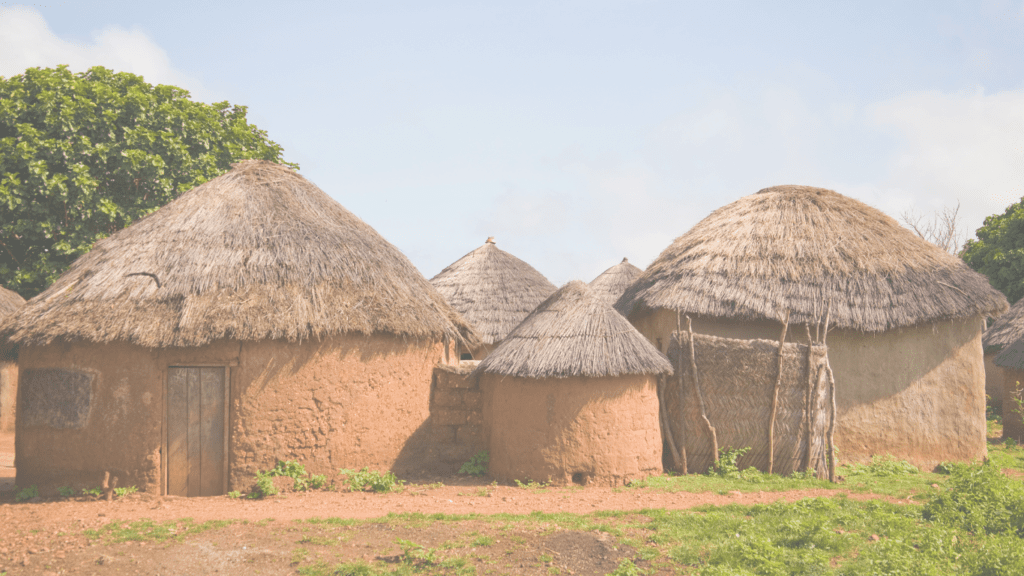
I was met with a disturbing thought that if one has to support the existence of an Indigenous group, shouldn’t we start by educating ourselves about their lives and customs so that we can appreciate it more, rather than building empty artificial huts to appeal to the tourists’ aesthetics? And if this was supposedly the place where the Adivasis stayed, why were they displaced from a place and sanctuary that they called home? If it was in the name of conservation, does that privilege only extend to flora and fauna and not to the indigenous tribes who are the very guardians of these flora and fauna and who live in harmony with nature?
With these compelling questions swirling through my mind, I found Sheela Tomy’s Valli to be a revelation. It addressed many of my concerns with a depth that compelled me to reflect on a troubling reality: how the very people of the land are often responsible for otherizing those who are indigenous to it.
What is the Paniya History in Wayanad?
Valli tells the poignant story of Wayanad and its inhabitants, showcasing how the exploitation of the forest has inevitably led to the subjugation and enslavement of its people. As the forest receded, so did the Adivasi culture, their way of life, and even their languages. Wayanad has long been home to Kerala’s tribal communities, yet today, these tribes constitute merely 16 percent of the district’s total population. Among the various Adivasi communities in Wayanad, the Paniya tribe stands out, is recognized as a Scheduled Tribe, and represents the largest segment of the region’s indigenous population.
The Paniya people are found not only in Wayanad but also in the districts of Kannur, Kozhikode, and Malappuram in Kerala, extending to the neighbouring districts of Coorg in Karnataka and the Nilgiris in Tamil Nadu. The majority of South India’s Paniya population resides in Wayanad. Historically, the Paniyas have been relegated to the status of agricultural slaves, toiling in the fields of the janmis—landlords—under the oppressive system of ‘vallipani,’ which was a form of bonded labour in exchange for a meagre share of the harvest.

During the temple festival at Valliyoorkaavu, they were sold like livestock for a pitiful sum of just Rs. 30. The ‘Valli’ or share they received amounted to a tattered piece of cloth, seven and a half seers of paddy, and a mere five rupees in return for a whole year of arduous labour—along with a daily wage of just two seers of rice. The consequences of breaking this bond were dire, often resulting in severe punishment.
This bleak reality of exploitation ultimately gave rise to organized resistance, embodied in the Naxal movement that emerged in Wayanad as a response to the injustices faced by the Paniya tribe and other marginalized communities.
5 Reasons Why Protecting Indigenous People is Key to Biodiversity Conservation
- They maintain forest ecosystems.
- They possess centuries-old ecological knowledge.
- They prevent deforestation through sustainable practices.
- Their displacement leads to environmental degradation.
- Recognizing their rights strengthens conservation efforts.
How Adivasis Were Forcefully Displaced From Their Homes?
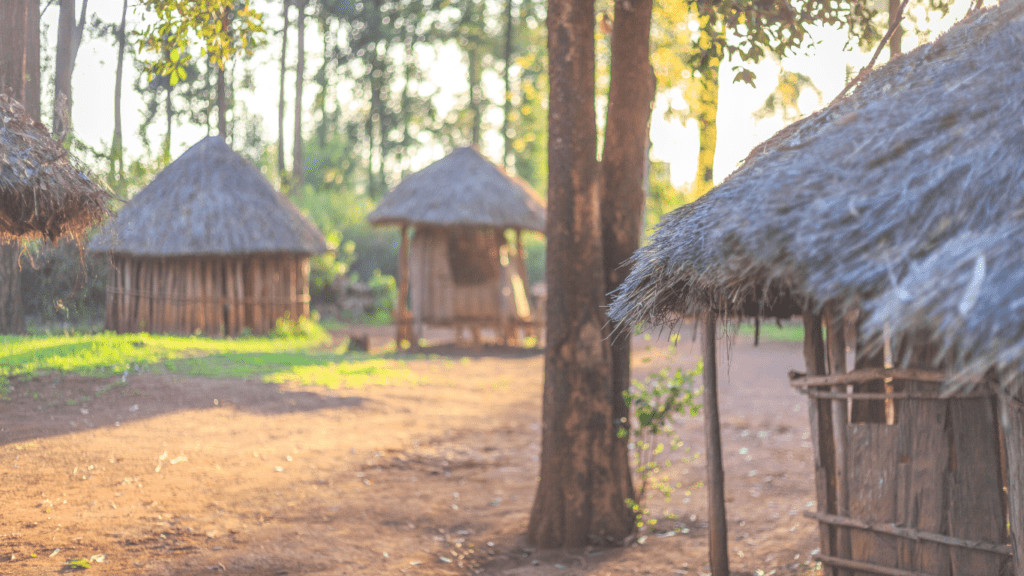
As time went on, people from southern Kerala began to migrate to Wayanad in flocks with their eyes on the fertility of the land and the dense forest shrouding the land. In the name of development more and more land was being cleared for timber, settlement, and farming, forcing the indigenous people out of their homes. Despite being classified as a Scheduled Tribe, the Paniyan community often faced challenges in asserting their land rights due to a lack of documentation and legal support.
However, despite Paniya being the largest tribal community in Wayanad, they are the most backward in many aspects like education. A big factor in this is pointed out in Valli by Sheela Tomy highlighting the need to ‘teach them in their own language.’ Even though it is the right of every citizen to study in their own language, ‘how does one assert that right in a language that had no script?’
Tribal Roots vs. Modern Rules
People in society often attribute exotic features to Adivasis, leading to their exploitation and marginalization. This misrepresentation has contributed to the acculturation of tribal communities. The Adivasis, particularly the Paniyas, face significant alienation in today’s world. They find themselves torn between maintaining their cultural roots and adapting to the modern demands imposed by the government and other private entities, which claim to aim for their ‘upgradation.’
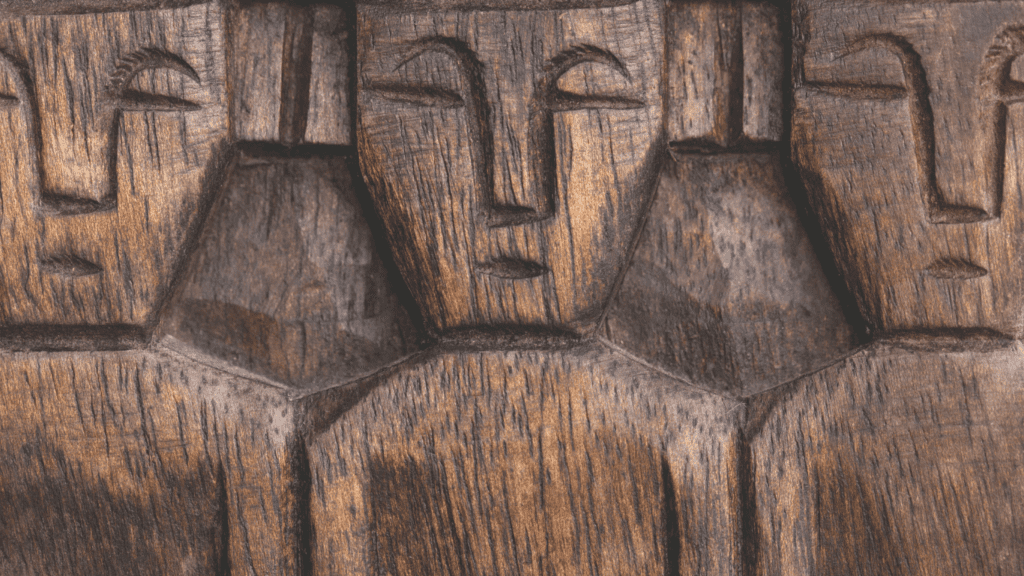
This alienation stems from a history of forced servitude and the violation of their human rights. While India has made strides to break free from colonial influences, the Paniyas are still on a journey toward reclaiming their freedom in a land that originally belonged to them. They have been displaced under the Forest Acts aimed at conserving forests, resulting in their forced relocation to areas designated by the government for their so-called betterment. Consequently, an indigenous group that once thrived in remote regions has been forcibly integrated into the mainstream population without their consent.
The Parliament enacted the Scheduled Tribes and Other Traditional Forest Dwellers (Recognition of Forest Rights) Act in 2006 to address the historical injustices suffered by tribal communities throughout the colonial and post-colonial periods. Although the Act aims to involve forest-dwelling tribes in the conservation of forests, it often fails to enable their participation in practice. Today, Adivasis are compelled to live in overcrowded huts, a stark contrast to their traditional way of life that relied on the forest’s abundance.
Biodiversity Includes People Too!

As I conclude my article, I urge readers to consider whether the conservation of forests should come at the expense of separating these vital ecosystems from their protectors: the indigenous people who have historically been their guardians. Biodiversity encompasses all forms of life on Earth—shouldn’t that include the indigenous peoples who inhabit these environments? By focusing solely on the conservation of flora and fauna, what justice are we serving regarding the broader concept of biodiversity conservation and protection?
In conclusion, I will end my article with a snippet from Sheela Tomy’s novella Valli, recited by one of the Paniyan women in the novella ‘Kali’ during her final moments after being physically exploited by a timber merchant.
“Kattiliya jeevineyalla podikkandiyey
Nattujeevineyanju podi”
[It is not the creatures in the forest that we have to fear, it is the creatures among us.]
Resources:
Babu, Sarah. Our Heritage Misrepresentation and Modernization in Alienation of Paniya Tribes in Wayanad. Vol. 68, no. 0474-9030, 2020. Accessed 7 Mar. 2025.
Chan, Wurok. “Impact Factor: RJIF 5.22 Www.academicjournal.” International Journal of Academic Research and Development 146 International Journal of Academic Research and Development, vol. 3, no. 6, 2018, pp. 2455–4197. Accessed 6 Mar. 2025.
“En Ooru | Tribal Heritage Village | Tourist Places in Wayanad | Kerala Tourism.” Kerala Tourism, 2022, www.keralatourism.org/kerala-article/2022/en-ooru-tribal-heritage-village-wayanad/1251 Accessed 6 Mar. 2025.
Krishnan, Vasundhara . “Paniya People of Wayanad: A Brief Ethnography.” Sahapedia, www.sahapedia.org/paniya-people-wayanad-brief-ethnography Accessed 7 Mar. 2025.Sheela Tomy. Valli. Harper Collins, 25 July 2022.

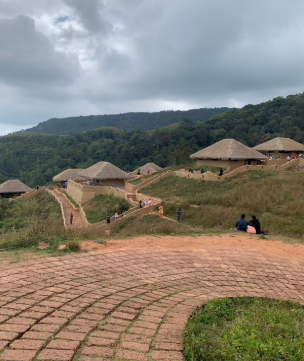
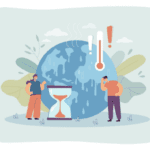

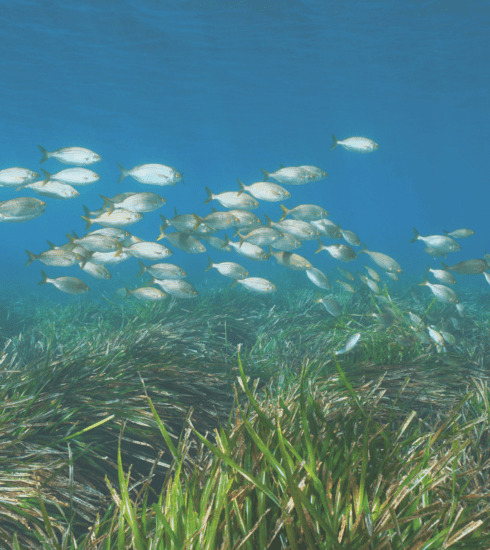


144 Comments
Arundhathi Kiran
9 months agoGood work
Shafeena
9 months agoI appreciate the effort writer has put in to give us an insight in to the lives of adivasis and how we often tend to misinterpret their real needs.Very informative piece of work!
Sarita
9 months agoWell written. Appreciate the efforts put in by the writer. Keep going…………..
Samitha Jaseem
9 months agoWell written
Pooja
9 months agoThis article makes us think whether the ethnicity of people are always as important as that of the endangered species.
Keith
9 months agoNicely written
Keith
9 months agoNicely written article very informative
Rasheed pc
9 months agoExcellent narative that have the color and force of nature.
Adhillll
9 months agoNice work keep going and very understandable and informative
Carolin Motha J
9 months agoIt was interesting to read the article. Good job!!
Alai Paul
9 months agoGood read, well written article
Gayathri
9 months agoWell written. All the best ❤️
Shifa shefeeq
9 months agoThis article beautifully highlights their struggles and strengths to overcome it..Loved it
anusiyaap01@gmail.com
9 months agoVery good article good job
Sulfath
9 months agoThis article was informative and well writtened
Leanne
9 months agoSo good!!
Rasmina
9 months agoVery insightful
Pooja
9 months agoInsight information about Indigenous culture
Thanveer Ali
9 months agoThis article provides a valuable perspective on the struggles faced by tribal communities in the modern era. Preserving their heritage is of paramount importance. Well done.
Abin
9 months agoBrilliantly articulated!
Suresh Menon KP
9 months agoA very beautiful article written about tribal life and its stages. Absolutely good work.
The article’s heading, beyond hugging trees conserving biodiversity with strong tribal love, is truly meaningful and enchanting.
My thousand best wishes to the writer who has given more knowledge about the tribals of Wayanad, Kerala. I wish her to write more on various diverse topics.👍💐
Aysha Ziya
9 months agoThis article really made me think, We talk about saving forests, but what about the people who have protected them for generations??? Reading about the Paniya tribe and the way their culture is sidelined was both eye opening and heartbreaking.
Anwar sadath
9 months agoGood writing
Adhil Kp
9 months agoEye-opening and thought provoking!
Adithi
9 months agoVery informative
Darshan
9 months agoPowerful Insight!
Sana
9 months agoGood work!
Lamya
9 months agoInteresting read!
Bekha
9 months agoThis piece is a powerful reminder that true cultural appreciation goes beyond tourism and souvenirs.
Lameeh
9 months agoWell Written👏🏻
Gayathri Menon
9 months agoInsightful read!
Sharon Alex
9 months agoWell-expressed thoughts!
Afiya
9 months agoA thought-provoking piece that highlights the irony of displacing indigenous people in the name of conservation. The writing is clear and well-researched. Well written 🙂
Shamsad
9 months agoA very well and informative article . Thae ideas are presented in a clear and engaging way, making it easy to follow
Zainab Ali
9 months agoNice Work!👌🏻
Dana
9 months agoBeautifully crafted! Offered profound insights while keeping the readers thoroughly engaged. Keep going!
Tessa Rose
9 months agoBeautifully narrated
Fousia jalaludheen
9 months agoWell written about tribal adivasis… Good work👍
Jalaludheen
9 months agoGave me a good picture of Adivasis and their struggle for the existence.
Good effort 👌🏼
shri shivani
9 months agoA deeply insightful and well articulated post that truly makes you ponder about the ethical considerations of conservation…as in, if the concept only encompasses the land or its people as well. Keep writing more!
Simi Muneer
9 months agoThis was a really insightful and well-written article. Great job 👏🏻
Simi Muneer
9 months agoThis was a really insightful and well-written article. Good job 👏🏼
Jalaludheen
9 months agoGave me a clear picture of tribal Adivasis struggle for their existence.
A good work👍🏼
Fousia jalaludheen
9 months agoWell written about tribal adivasis..
. Good work 👍
Aqeela
9 months agoVery interesting article and well expressed.
Nisha anwar
9 months agoWell done! Let it serve as an insight to the lives of the Adivasis.
Ms. Santhi B. Nathan
9 months agoThe Article is very well written & imparting knowledge about the people who are protecting the mother Nature. Very thought provoking. After reading felt very sad about the Paniya tribe, how they have been exploited by the Administration. In the name of development or upgradation of Adivasis, Administration forgot the fact that Protecting Indigenous People is Key to Biodiversity Conservation. Keep writing….
John George
9 months agoA well written article which actually shows the sufferings and discrimintaion which the adivasi tribe faces.
Badhusha
9 months agoNatural selection. Reading between the lines, its a manifest on Slavery.- subjugation, exploitation. Adivasis to escape prying powerful community, boycotts escaped to remote, inhabitable places to avoid tyranny through centuries. Timber merchant exploits is a mere tip of the iceberg, The victim – Adivasi- cannot stand the scrutiny and rigor of justice delivery. Here it is Survival of the Fittest. For Adivasis it is a Jungle life,
Aabel Jude
9 months ago,👍
akhin nishad
9 months agonice work
Liza Prince
9 months agoThis is an interesting article well expressed, gives us an insight about Adivasi people life 👌
Liza Prince
9 months agoThis is an interesting article well said.
Lakshmi P Menon
9 months agoWell written
Abel
9 months agoGood work.
Arun rajeev
9 months agoAmazing work
Sufaid
9 months agoNicee
Anandhu Aravind
9 months agoAmazing work.
Mubeena shafeer
9 months agoA well written article 😃
Wonderful
Amala
9 months agoGood work!
RAjAB
9 months agoWell written & thought provoking article.
Ardra
9 months agoBeautifully written!
Sreeja
9 months agoWhat a Wonderful creation!!!!❤️
Allen
9 months agoThank you for this beautifully written piece! I really admire how you’ve highlighted the deep connection between the Adivasi communities and nature, going beyond the usual conversations around conservation. Your storytelling brings out both the emotion and wisdom that often get overlooked. Truly inspiring!
Athira
9 months agoWell expressed thoughts……
Riza Anwar
9 months agoThe article provides a thoughtful insight into the Paniya tribe’s role in biodiversity conservation and the challenges they endure. It effectively captures the irony of displacing an indigenous community that once coexisted with nature, only to incorporate them into the mainstream without their consent. A compelling and well-crafted piece!
Bhagyasree S
9 months agoWell written
Bhavya
9 months agoAn excellent article that holds significant social relevance in today’s times.
Santhosh
9 months agoExcellent article
Sumayyah
9 months agoThis article powerfully highlights the Paniya community’s struggle and the contradictions in conservation policies. It’s insightful, thought-provoking, and a crucial reminder that true biodiversity includes indigenous peoples. Well done!
Neha Paul
9 months agoWoww!! This is so good!!
Abdulahadsadath2017
9 months agoGood word
Ashitha
9 months agoExcellent! You deserve all the approvals you’re getting…
Abdulahadsadath2017
9 months agoNice work
Jasara jamal
9 months agoGood work
Seenath
9 months agoWell presented and hats off for this magnificent work
Faisal
9 months agoGood writeup and nice insights and thoughts. A reminder that Adivasi people have been protecting nature for generations with their love and wisdom. We have so much to learn from them
Seenath p.c
9 months agoWell presented and hats off for this magnificent work
Samer
9 months agoWell researched and high time we get to know more about the Adivasi community and their connection with nature
Keep up the good work.
JASEENA
9 months agoExcellent article and well written. All the best.
Martin
9 months agoGood article
Akshay
9 months agoSo good,,👍
Lamiya
9 months agoThis piece beautifully captures how protecting biodiversity goes beyond mere ‘tree-hugging’—it’s about deep, ancestral connections to the land. The powerful love and wisdom of Adivasi communities remind us that true conservation comes from living in harmony with nature, not just protecting it from a distance. A truly inspiring perspective!
Ann
9 months agoGreat work
Nisa faisal
9 months agoVery good article
Sabin
9 months agoExcellent
Ameen
9 months agoA well written and thought provoking article which also shows the effects of contemporary world towards adivasi.
Muneer
9 months agoWell Said Kuduos to the writer
Shafeer
9 months agoGood work amazing writing
Shafeer
9 months agoGood work amazing writing 👍
PRINCE JACOB
9 months agoI believe this subject is a solution to current problems today.
Safa fathima
9 months agoThis is so captivating and thought provoking!
Farsana Mohammed
9 months ago“Excellent”.
Marwa
9 months agoWonderful article
THAhIRA
9 months agoYour article is so good because you know the right word for the right moment. This is so well-researched and thorough. I’m impressed.
Najitha
9 months agoThis article provided valuable insights into the lives and experiences of Adivasi communities
RAJESH
9 months agoAmazing work👌👌
Vishnu
9 months agoGood
Radha
9 months agoNice
Radha
9 months agoBrilliant
Seena
9 months agoA Very good job dear,ur concept very thoughtful our society. All the best 👍
Mio
9 months agoVery good content really informative the topic is really interesting which makes me feel really good to read
Gouri
9 months agoWell written 🙌🏼
Mehdiya
9 months ago“Wow, this article is absolutely amazing! The way you explained biodiversity and conservation is so powerful and inspiring. It’s clear that you put a lot of thought and effort into it, and your passion for protecting nature truly shines through. Your words have the power to educate and inspire change, and I know this piece will make a real impact. You should definitely share it with a wider audience—maybe submit it to a magazine or present it somewhere! Keep writing, because the world needs voices like yours. So proud of you, bestie!”
Saira sadeek
9 months agoYour article really inspires me
Aparna
9 months agoThis is a well written, thought provoking piece on conservation efforts that often overlook the needs of tribal communities. The article calls for a more inclusive understanding of conservation, one that values both ecological preservation and the protection of indigenous rights.
Febin
9 months agoExcellent!! You deserve all the credits you’re getting…
Febin
9 months agoExcellent!! You deserve all the credits you are getting…
Dr. Kamarudheen
9 months agoIts a well Written Article, and wish you all the very best.
Febin
9 months agoExcellent! You deserve all the approvals you’re getting…
Febin
9 months agoExcellent! You deserve all the approvals you’re getting…
Bincy
9 months agoPerfect 😍
MUDIFA KOLTHARKAR
9 months agoVery Nice Article.Amazing work.
Madiha
9 months agoNicely written very informative. A good read in today’s generation.
Shanitha
9 months agoAmazing work…well written
Hiba Abdul kader
9 months agoGood job👍
Emma
9 months agoWritten exceptionally well!
Mujeeba
9 months agoHere’s the translation:
“Let there be more writers like this, who reveal the real lives and challenges of tribal communities to the outside world. My salute to them.”
Rumana
9 months agoNice work
Mufassir K.M
9 months agoThis article sheds light on the importance of considering the indigenous people of our land to whom injustice have prevailed for centuries.. It’s important that the govt and the people take note of their problems , and consider their needs while creating laws..in the name of nature conservation..
Great work..
Arshiya
9 months agoWell researched and informative ,thanks
Arshiya
9 months agoLove the way u approached this topic
Shiyas
9 months agoWell written
Safitha
9 months agoGreat Work
Haris Ali - Abu Dhabi
9 months agoDear Nisha,
Your article offers a profound and heartfelt exploration of the complex dynamics between indigenous communities and modern society. Your vivid recounting of your visit to ‘En Ooru’ in Wayanad not only paints a detailed picture of the tribal heritage village but also prompts critical reflections on the authenticity and impact of such initiatives.
Your concerns about the potential commodification of Adivasi culture and the displacement of indigenous people in the name of conservation are both valid and thought-provoking. As highlighted in your narrative, ‘En Ooru’ aims to showcase the vibrant culture and traditions of Kerala’s tribal communities, providing a platform for tribal artisans and performers to sustain their livelihoods. 
Your integration of historical context, particularly regarding the Paniya tribe’s experiences, adds depth to your analysis. The historical exploitation and marginalization of the Paniya people underscore the importance of approaching cultural preservation with sensitivity and respect.
Your article serves as a compelling reminder that true conservation and appreciation of biodiversity must encompass not only the natural environment but also the indigenous communities who have been its stewards for generations. Your call to recognize and integrate indigenous knowledge and rights into conservation efforts is both timely and essential.
Thank you for sharing your insights and for encouraging a more nuanced understanding of the intersection between cultural heritage and modern development.
Warm regards,
Haris Ali – Abu Dhabi
Haris Ali - Abu Dhabi
9 months agoDear Fiza,
Your article offers a profound and heartfelt exploration of the complex dynamics between indigenous communities and modern society. Your vivid recounting of your visit to ‘En Ooru’ in Wayanad not only paints a detailed picture of the tribal heritage village but also prompts critical reflections on the authenticity and impact of such initiatives.
Your concerns about the potential commodification of Adivasi culture and the displacement of indigenous people in the name of conservation are both valid and thought-provoking. As highlighted in your narrative, ‘En Ooru’ aims to showcase the vibrant culture and traditions of Kerala’s tribal communities, providing a platform for tribal artisans and performers to sustain their livelihoods. 
Your integration of historical context, particularly regarding the Paniya tribe’s experiences, adds depth to your analysis. The historical exploitation and marginalization of the Paniya people underscore the importance of approaching cultural preservation with sensitivity and respect.
Your article serves as a compelling reminder that true conservation and appreciation of biodiversity must encompass not only the natural environment but also the indigenous communities who have been its stewards for generations. Your call to recognize and integrate indigenous knowledge and rights into conservation efforts is both timely and essential.
Thank you for sharing your insights and for encouraging a more nuanced understanding of the intersection between cultural heritage and modern development.
Warm regards,
Haris Ali – Abu Dhabi
Noorjahan
9 months ago“Great article!
Edith
9 months agoVery well written!!
neenu
9 months agoAmazing work . Well written. Loved it
Aseena p a
9 months agoGreat work 👍🏻
Fathima shiyara
9 months agoThe article was insightful,we should take more measures to protect the environment as well as the indigenous group ,good work
Suhail
9 months agoNice
Dilshan manaf
9 months agoNice work… Wonderful 👏🏻
Dilsperado
9 months agoWell written and Great Work…. Wonderful 👏🏻
Adhnan
9 months agoThis title beautifully captures the deep, lived connection Adivasi communities have with nature. Their love for the land isn’t just sentimental—it’s a powerful force for protecting biodiversity through traditional knowledge, sustainable practices, and a profound respect for all living beings. True conservation must recognize and uplift these indigenous efforts, not just as allies but as leaders in safeguarding our planet.
Adhnan
9 months agoThis title highlights the deep bond Adivasi communities share with nature. Their love for the land goes beyond sentiment—it’s a lived practice of protecting biodiversity through traditional knowledge and sustainable ways of life. Recognizing and supporting their role is essential for true conservation.
Adhnan
9 months agoAdivasi communities have protected nature for generations. Their love and wisdom are key to true conservation.
Sabira
9 months agoGood work
Fayiza
9 months agoWell done 👍🏻
Raya Elizabeth Jose
9 months agoA very beautiful article written about tribal life and its stages. Absolutely good work.
Raya Elizabeth Jose
9 months agoWell described about the habitabts of the adivasi group in waynad
Mridula
9 months agoThis piece challenges conventional views and emphasizes the importance of inclusive conservation. Good work!
Maverick
9 months agoVery well written article. You definitely have a way with words!
Sheela Tomy
9 months agoThank you dear for this wonderful article. I am happy that ‘Valli’ made you think differently and made you write this insightful note. Hugs. Do try to publish it in some journal or magazine to reach to a wider audience. It deserves. More inclusive understanding of conservation, giving importance to the protection of indigenous rights and at the same time allowing their entry to mainstream, is definitely a need. And the title tells everything. Thanks dear. Keep writing!
Love from Author of Valli,